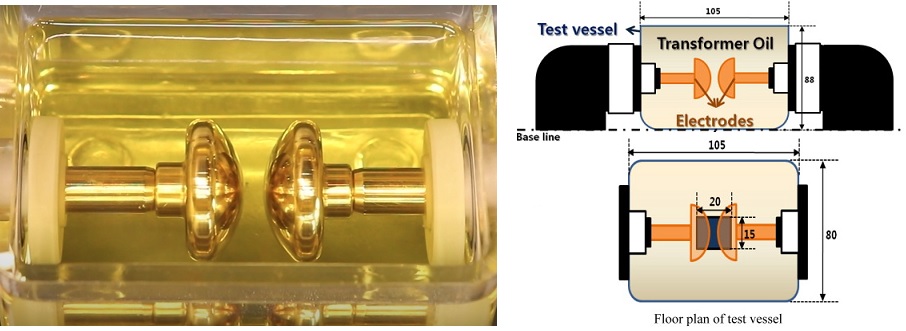Why Dielectric Transformer Oil Issues: Key Attributes and Maintenance Tips
The importance of dielectric transformer oil extends past simple functionality, playing a crucial function in both the insulation and cooling of electrical transformers. Its special properties, such as high dielectric toughness and chemical security, add to functional efficiency and safety. The maintenance of these oils is equally crucial to protect against issues that may endanger transformer efficiency. Understanding the vital features and ideal practices for maintenance is important for making sure longevity and reliability. As we explore these facets better, the ramifications for transformer health and functional performance become significantly apparent.
Importance of Dielectric Transformer Oil
Dielectric transformer oil plays a crucial role in the effective operation of electrical transformers, as it is constantly used as both an insulator and a coolant. Its insulating buildings avoid electrical discharges and arcing, which are important to keeping the honesty of transformer parts. By properly separating conductive components, dielectric oil boosts the safety and security and reliability of the transformer, thus extending its operational lifespan.
In addition to its insulating capacities, dielectric transformer oil works as a coolant, soaking up and dissipating warm produced during the electrical transformation process. This thermal monitoring is necessary to protect against getting too hot, which can cause devices failure and costly downtime. The oil circulates within the transformer, successfully moving warm away from vital locations, thus guaranteeing ideal performance.
Furthermore, the chemical stability of dielectric oil is essential for decreasing the oxidation and deterioration that can occur with time (electrical insulating oil). Normal tracking of its homes, such as moisture web content and acidity, is important for keeping its efficiency. Overall, the value of dielectric transformer oil can not be overstated, as it is basic to the safe, reliable, and long-term procedure of electrical transformers
Key Features of Dielectric Oil
The efficiency of dielectric transformer oil is largely figured out by its key attributes, that include high dielectric stamina, thermal conductivity, and chemical stability. High dielectric stamina is important as it permits the oil to endure substantial voltage levels without breaking down, therefore avoiding electric arcing and making certain safe operation of the transformer. This particular is vital for preserving the integrity of electric systems.
Thermal conductivity is another vital attribute of dielectric oil. It facilitates effective warmth dissipation from transformer parts, reducing the danger of getting too hot and prolonging the lifespan of the devices (dielectric transformer oil). Effective thermal administration is important in keeping optimum operating temperatures, which directly influences performance
Chemical stability is similarly crucial, as it makes sure that the oil does not weaken or respond detrimentally with materials within the transformer in time. This stability assists preserve the oil's protecting buildings and avoids the formation of damaging sludge or deposits that can hinder functionality.
Additionally, low viscosity at running temperatures enables better blood circulation within the transformer, cooling down both improving and insulation. Together, these key characteristics ensure that dielectric transformer oil performs effectively, sustaining the total effectiveness and dependability of electrical systems.
Advantages of Making Use Of Dielectric Oil

In addition, dielectric oil acts as an effective coolant, dissipating heat produced during transformer procedure. This temperature level law is essential for avoiding overheating, which can cause devices failing or minimized life-span. The oil's thermal buildings add to optimal operational conditions, enabling transformers to function at their best.
Another significant advantage is the oil's chemical stability and resistance to oxidation. These residential or commercial properties decrease the formation of sludge and various other degradation results, therefore decreasing upkeep requirements and prolonging the intervals between oil adjustments. In addition, dielectric oil supplies outstanding moisture absorption capabilities, which shield the transformer from the destructive impacts of water ingress.
Maintenance Ideal Practices

Furthermore, preserving the transformer's temperature within specified limits is vital. Elevated temperatures can accelerate oil degradation, adversely influencing its dielectric properties. Implementing a temperature level surveillance system can assist in preserving ideal conditions.
Furthermore, ensuring correct air flow and cooling of the transformer unit minimizes the threat of getting too hot. It is likewise essential to keep the transformer without particles and pollutants that may endanger its performance.
Performing regular visual assessments for leaks, deterioration, or indications of endure seals and gaskets is another finest technique. Any type of abnormalities must be dealt with without delay to stop oil contamination and maintain system stability.
Lastly, establishing an upkeep routine that consists of oil replacement or therapy can boost the life expectancy of dielectric oil, guaranteeing it remains to execute efficiently. By taking on these maintenance finest techniques, operators can enhance transformer efficiency and reduce unintended downtime.
Common Issues and Solutions
Transformers making use of dielectric oil can encounter a number of usual issues that may influence their efficiency and reliability. One famous concern is the degradation of the oil because of thermal stress and anxiety, which can lead to lowered dielectric stamina and raised risk of arcing. Regular tracking of the oil's temperature level and implementing cooling services can alleviate this trouble.
An additional concern is moisture ingress, which can jeopardize the protecting buildings of the oil. This can be addressed through normal testing for water web content and using desiccants or vacuum cleaner dehydration procedures to remove moisture.
Additionally, the formation of sludge see this website due to oxidation can obstruct typical operation. This can be fixed by regular oil filtering and replacement when needed, making sure ideal liquid tidiness.

Final Thought
Finally, dielectric transformer oil plays a crucial duty in guaranteeing the reliable procedure and safety of electric transformers. Its vital qualities, consisting of high dielectric toughness and chemical stability, add to ideal efficiency while minimizing additional info maintenance demands. Sticking to best maintenance methods, such as routine surveillance of moisture and acidity, is vital for protecting against common issues and improving the operational life expectancy of transformers. The value of dielectric transformer oil can not be overemphasized in the world of electrical framework reliability.
The value of dielectric transformer oil expands past plain capability, playing a crucial duty in both the insulation and air conditioning of electric transformers.Dielectric transformer oil plays a vital function in the effective operation of electrical transformers, as it is consistently employed as both a coolant and an insulator. On the whole, the relevance of dielectric transformer oil can not be overemphasized, as it is essential to the risk-free, efficient, and long-term procedure of electric transformers.
The efficiency of dielectric transformer oil is mostly determined by its vital features, which consist of high dielectric strength, thermal conductivity, and chemical stability.In verdict, dielectric transformer oil plays a recommended you read crucial function in ensuring the reliable procedure and safety of electric transformers.